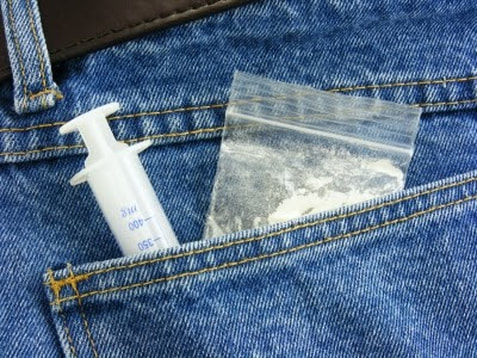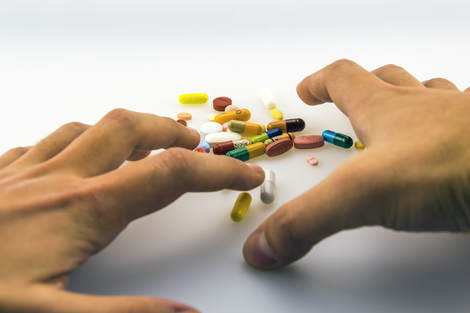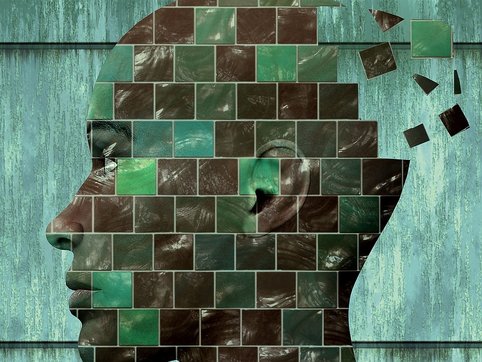Author: David BeeshawDavid Beeshaw is a health blogger who dedicated his time and efforts to help people dealing with HIV and STIs. A part of the team at raTrust, David often writes about psychological problems and stigma those at risk of STIs face and deal with. Drug addicts often don’t want to admit that they have a problem. Until they do that, they cannot enter treatment or successfully overcome their addiction. In most cases, addicts' denial is covered by a multitude of excuses, which you will need to destroy if you want to get through to them. Here are some of the most popular excuses you will hear from drug addicts in denial, together with some ideas on how to overcome them. 1. I’m only hurting myself This is a form of self-sabotage, and it’s also a lie. Addicts will say that their behaviour only affects themselves, and if you are a member of their family or a loved one, you will know it’s not true. Addicts can hurt everyone that cares about them, and if their behaviour descends to the level of crime, they will be hurting others too. Explain how much you have been hurt by their actions so far to counter this excuse. 2. I can quit any time
This is such a common excuse that it has become a punchline. Make a challenge: if that’s true, ask them to quit for just one week to prove it. Their failure to do so will be something you can use next time they say this – and if they succeed, then they may end up going clean long-term. 3. I’m under a lot of stress Addictive behaviour can often be triggered, or worsened, by traumatic or stressful events. However, due to the nature of addiction, it’s not likely that things will ever get better while they are using. Explain to them that there are other, healthier ways to deal with stress, and that you are willing to try those methods out with them.
2 Comments
Author: Lucy TaylorLucy Taylor is an avid blogger who enjoys sharing her tips and suggestions with her online readers. Working as a legal expert at LY Lawyers, Lucy often helps people dealing with legal problems, addictions and crime. Follow her on her Twitter @LucyTaylor1981. Here’s how to spot when an addict is about to relapse – and how to help them out. Addiction is a lifelong burden to bear: an addict in recovery believes that they will never truly be cured. They can relapse at any time, and without personal diligence and a good support system, many addicts do fall victim to this. Here’s how to spot when an addict is about to relapse – and how to help them out. 1. Change in mood If someone’s mood suddenly changes, and especially if they are experiencing mood swings, this could be a key sign of internal conflict. Not only that, but sudden stress and irritability could lead to them seeking a return to their old addiction in order to feel better. Irritability, secrecy, and sudden bad moods are key signs to look out for. If you spot those signs in an addict you know, try talking to them about the cause behind their mood change to see if you can help alleviate the source. Irritability, secrecy, and sudden bad moods are key signs to look out for.
Imagine trying to live without air. Now imagine something worse. ― Amy Reed, Clean
Almost all of us have one or more friends who have suffered from addictions. Whether it be drugs, alcohol, or something else, those are often very sad stories full of extreme hardships and adversities, not only for those who are direct victims of the addiction but to their whole families and friends.
What can we do about it? Apparently, as individuals, we cannot do much, but every honest contribution to this battle is still extremely valuable when we consider the harshness of the consequences of these behaviors. However, the joint approach is vital in this field. We must unite our efforts if we really want to make a change on the global level. But what are we fighting against? What or who are our enemies? Can we fight them outwardly or is that an inner battle? What are our goals in that battle, and do we have the tools for achieving them? And finally, should we talk about fighting or inner transformation? What is an Addiction? First, we have to be clear what is an addiction per se. We can define it as a compulsive behavior which is expressed through seeking and using various substances or engaging in various activities that are often detrimental to one’s psychological or physiological health. In accordance with that, we can say that there are two basic types of addictions:
We are all aware of the gravity of substance addictions. But we must not underestimate the seriousness of the behavioral addictions too, as all compulsive behaviors are deeply engraved into the neurological structure of our brains and have strong habitual forces behind them. All compulsive behaviors are deeply engraved into the neurological structure of our brains and have strong habitual forces behind them.
In order to get a deeper understanding of those forces and why people are so prone to relapses of old addictions, we should take a look on numerous invisible background energies.
Spiritual View on Addictions The highest states of Being (Peace, Joy, and Love) have their degraded forms: Love in its degraded form is infatuation or obsession; Peace in its degraded form is drugs and alcohol; Joy in its degraded forms is sensual bodily pleasures. Through addictive substances or behaviors, people are actually trying to achieve, at least temporarily, these highest states of Being. Sadly, by using the wrong means and while having many misconceptions and limited views on reality. Addictions are entities that are conscious to some extent and are very cunning.
But there is another aspect of this problem, which is often hidden from our knowledge. These addictions are entities that are conscious to some extent and are very cunning. Here’s how.
Like attracts like. Positive energies or things attract energies or things of their kind, and the same stands for negative energies. Pertaining to human personality, negative energies and experiences tend also to coalesce into an ever-bigger energetic entity. We call these entities morphogenetic (morphic) fields or pendulums.[1] And yes, there are such fields linked to every addiction. They exist and grow in individuals, groups, or even in the whole humanity, on a collective level. They are living beings, with some level of self-consciousness and even intelligence. Normally, we are not aware of their existence at all, due to our severely limited perception of reality. Energies and experiences tend to coalesce into an ever-bigger energetic entity. We call these entities morphogenetic (morphic) fields or pendulums. And yes, there are such fields linked to every addiction.
The morphic fields have a strong tendency to survive and grow. They feed on energies of their similar kind. When they are “hungry” (with low energy level), to get enough “food”, these entities will always try to induce positive or negative psychological states or external events (depending on their own nature), as they feed themselves with the same sorts of energies.[2]
In this case, we must deal with addictions. Obviously, they have very “negatively” oriented energies in their background. What’s very important, we must not directly fight negative morphic fields, as that will only give them an additional momentum, and that’s the reason why we can call them pendulums. One of the ways to stop the pendulum’s swinging is to be present during its activity and consciously ignore generated negativity, something like being transparent. If we were persistent each time in this, that specific morphic field will finally abandon our individual life. There are countless types of morphic fields. For example, there are morphic fields of every family, a group of people, sports clubs, societies, organizations, companies, countries, nations, state administration, schools, religions, animal species, specific human behaviors, emotions of all kinds, diseases, and so forth. So, there are also very strong morphic fields of addictions, too. As said before, they are cunning and seductive in their striving to achieve their goals. They often induce specific accidents and stressful situations or use people in the person’s surroundings and even his or her friends to incite the addictive behavior or to re-establish it again. |
Please note that most of the articles have a "Read More" break, which is sometimes hardly visible.
It is located at the bottom of visible part of the article, on the right side. To continue reading the article, click on that link. This page may contain affiliate links meaning we earn a commission if you use those links.
We only recommend pages we appreciate and trust. Archives
March 2023
Categories
All

|
For guest posts or placing ads on our website, please use the contact form on the 'About/Contact Us' page.







 RSS Feed
RSS Feed

